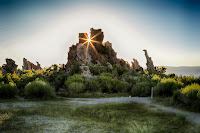Faithful Until Death

The church of Smyrna is only one of two of the seven Asian churches that received no correction, the other being Philadelphia. What set this congregation apart was the level of persecution that it endured because of its “ testimony ,” and its steadfast refusal to “ eat meat offered to idols ” and otherwise compromise with the Greco-Roman culture. Its members stood firm in their refusal to participate in the imperial idolatry of Rome, and consequently, they suffered “ tribulation ” and persecution due to false accusations against them made by Satan’s agents.





